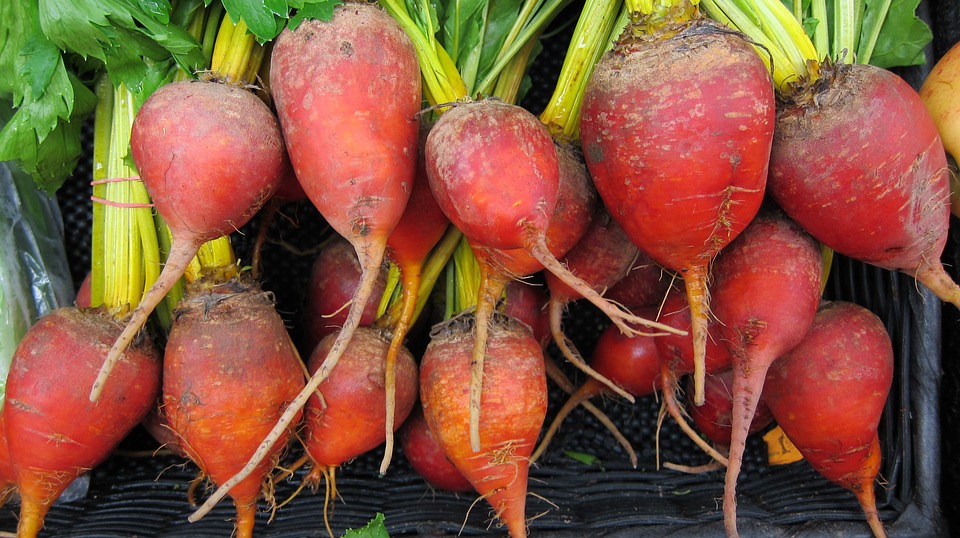
Advertisement
Humans have been using food as medicine since the beginning of time. Ancient healers understood how the foods that we eat impact our health and well-being; and because they appreciated the power of diet, they used edible plants just as much as inedible ones to treat and prevent disease.
Today, many studies promote the use of nutritious foods to fight chronic diseases like heart disease and cancer. In the case of the latter, the earliest studies point to allium and cruciferous vegetables as the best cancer-fighting foods. These veggies are not only rich in essential nutrients, but they also contain powerful chemicals that can prevent and treat cancer.
Comprehensive studies on alliums and crucifers have revealed that these edible plants produce sulfur-containing compounds in response to environmental threats. These chemicals help protect alliums and crucifers from insects, bacteria and fungi. Some also contribute to these foods’ pungent flavors and scents, as is the case with garlic and onions – two well-known allium vegetables.
But the best thing about these compounds is that they can halt the progression of cancer by killing cancer cells. Studies on the diets of people living in different parts of the world also show that those who eat more of these veggies have lower risks of several types of cancer. This is why alliums and crucifers are at the top of the list of the best cancer-fighting foods in the world.
Due to ongoing research, scientists continue to add superfoods to this list. The latest to join the ranks of these cancer-fighting foods is beetroot. According to a recent study by American researchers, red beetroot, in particular, is a potent anti-cancer agent mainly because of the soluble pigments that give it its striking red color.
Collectively known as betalains, these naturally occurring compounds are the counterparts of anthocyanins in berries and other fruits. But while anthocyanins make certain fruits appear black, blue, purple or red, betalains give veggies a red or yellow color. In western diets, red beetroot is the primary source of betalains, as these powerful chemicals are present in only a handful of edible plants.
Red beetroot: uses, benefits and nutrient content
Beets are nutritious crops that belong to the amaranth family, which also includes vegetables like Swiss chard and spinach, and the seed or pseudo-cereal, quinoa. Beets are widely distributed throughout Asia, the Mediterranean region and Europe, and has a history of use as a folk medicine. Different varieties of beets exist, and all of them are grown for their edible leaves and roots.
Beetroot refers to the taproot of beets, which come in a variety of colors. These include purple, pink, golden, white and red. Red beetroot is the most common beetroot you can find in supermarkets. This vegetable is perfect for making dips, chutneys, juices and smoothies. Red beetroot is also the source of a red food colorant often used to enhance the color of tomato paste, sauces, jams and jellies.
In terms of nutrition, red beetroot is a low-calorie, fiber-rich source of essential micronutrients. A 100-gram (g) serving of red beetroot contains only 43 calories but provides 2.8 g of fiber and 1.6 g of protein. This root vegetable is also rich in folate (vitamin B9), manganese, potassium, iron, vitamin C and dietary nitrates, which are responsible for some of red beetroot’s remarkable health benefits. Here are some of them:
- Helps lower blood pressure
- Improves physical performance
- Lowers blood glucose and increases insulin sensitivity
- Improves digestion and boosts gut health
- Helps prevent cancer
Phytochemicals in red beetroot and their health-promoting properties
In a recently published review article, researchers from Montana State University and Ohio State University discussed what makes red beetroot such a powerful superfood against cancer. They enumerated the different plant nutrients found in red beetroot and reviewed what previous studies have learned about their activities inside the human body. Here’s a brief summary of their discussion about red beetroot’s phytochemical content:
- Betaine — A compound readily digested inside the body, research suggests it is responsible for red beetroot’s anti-inflammatory properties.
- Polyphenols — A class of active plant compounds, scientists believe they can help prevent cancer through their ability to neutralize free radicals like reactive oxygen species (ROS).
- Phenolic acids — Although none of them have been studied for their anti-cancer effects, phenolic acids are exceptional antioxidants. Here are some which have been extracted from red beetroots:
- Ferulic acid — An effective free radical scavenger according to studies, ferulic acid also stops the production of free radicals and reduces inflammation. This hints at a possible cancer-preventing activity.
- Caffeic acid — Cell culture studies show that besides reducing the oxidative degradation of lipids – an event that triggers ROS production – caffeic acid also protects DNA from damage caused by UVB and decreases oxidative stress as well as inflammation.
- p-Coumaric acid — A compound quickly absorbed in the intestine, p-coumaric acid can stop the growth of some tumor cell lines. Studies show that p-coumaric acid prevents the formation of new blood vessels, which cancer cells need to receive an ample supply of nutrients.
- Syringic acid — A non-toxic compound in red beetroot, syringic acid has shown protective effects against UV-induced skin cancer in animal studies, interrupting pathways involved in cancer development.
- Flavonoids — Red beetroot contains a variety of flavonoids, including the following
- Rutin — Test tube studies show it can decrease oxidative stress and inflammation in rats.
- Kaempferol — This compound triggers cancer cell death by disrupting the cell cycle.
- Rhamnetin — Like rutin, rhamnetin has antioxidant and anti-inflammatory properties.
- Rhamnocitrin — This flavonoid is toxic to HeLa cells, which are immortal cells derived from cervical cancer cells.
- Astragalin — According to studies, this powerful flavonoid can kill human liver cancer cells but not breast cancer cells. Astragalin also shows selectivity toward tumors, meaning it does not harm healthy cells.
- Triterpene saponins — Several reports confirm the anti-tumor effects of triterpene saponins. Oleanolic acid, a triterpene saponin found in red beetroot, can suppress cancerous tumors by arresting the cell cycle, which triggers cell death.
- Carotenoids — Also found in fruits and vegetables like oranges and carrots, research suggests that carotenoids like beta-carotene and lutein, which are present in red beetroot, can help prevent cancer development. Scientists believe the antioxidant activities of these carotenoids are responsible for their anti-cancer effects.
Cancer-fighting betalains
Betalains are the most studied active components of red beetroot. These chemicals are not toxic to rodents and humans, and, in fact, are commonly used in the food industry as food dyes. The earliest studies on betalains show that they are powerful free radical scavengers and even better food preservatives than butylated hydroxytoluene (BHT).
In cell culture studies, betalains have shown that they can protect against DNA damage and stop the excessive production of ROS. Betalains are also potent anti-inflammatory agents, capable of decreasing the levels of certain molecules that promote inflammation. According to one study involving rats with kidney disease, betalains from red beetroot reduced oxidative stress and inflammation in the animals’ kidneys. This action not only stopped kidney cells from dying, but it also saved the animals from kidney failure.
But the most remarkable benefit linked to beetroot betalains is cancer prevention. In one study, researchers reported that betalains extracted from red beetroot stopped the growth of tumors that were transplanted in nude mice. A group of studies also reported that adding betalains to the drinking water of mice protected them against carcinogens meant to induce lung, skin, liver and esophageal cancer.
Red beetroot is a nutritious vegetable that boasts a variety of health benefits, including better heart health, lower diabetes risk and cancer prevention. This superfood is easy to add to your diet and can be eaten raw, boiled or baked. To enjoy its nutritional benefits and boost your cancer protection, get creative in the kitchen and include red beetroot in your recipes or make yourself a healthy glass of red beetroot juice every day.
Sources:
Advertisements







